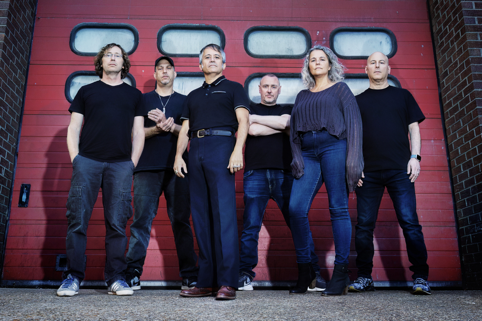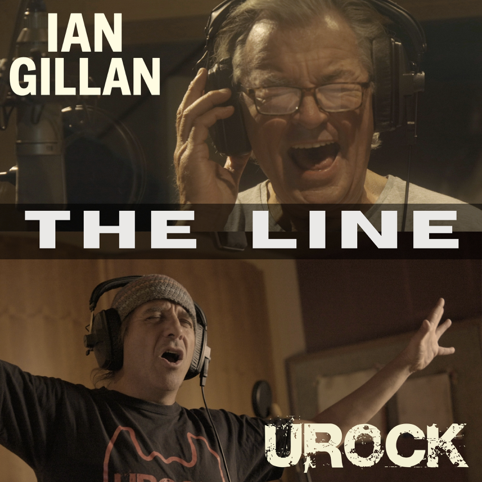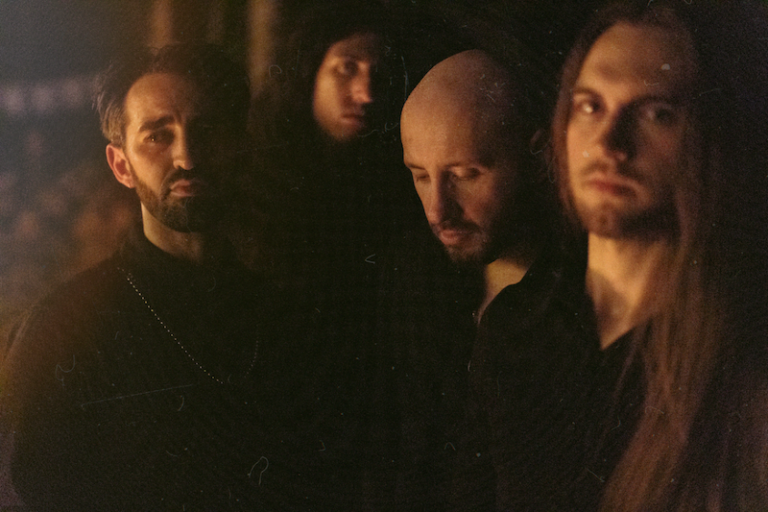I’ve always loved albums that flow from start to finish – a sonic journey that transports the listener away from the every day to somewhere altogether different. It’s a common theme of these pages, and it’s always a pleasure to have the opportunity to speak with an artist who approaches in this way. Earlier in the year, the reformed Green Carnation released one of the year’s most enigmatic and beautiful albums (check out our detailed review here). Entitled Leaves Of Yesteryear, it deftly casts its eye over the band’s storied history, whilst offering a pathway for the future, and it even found space for a stunningly evocative cover of Solitude – a move that, on paper, might raise an eyebrow, but a song that fits perfectly with the atmosphere and intent of the record. I was lucky enough to speak to vocalist Kjetil Nordhus, who took a great deal of time to talk through the themes and challenges of the album.
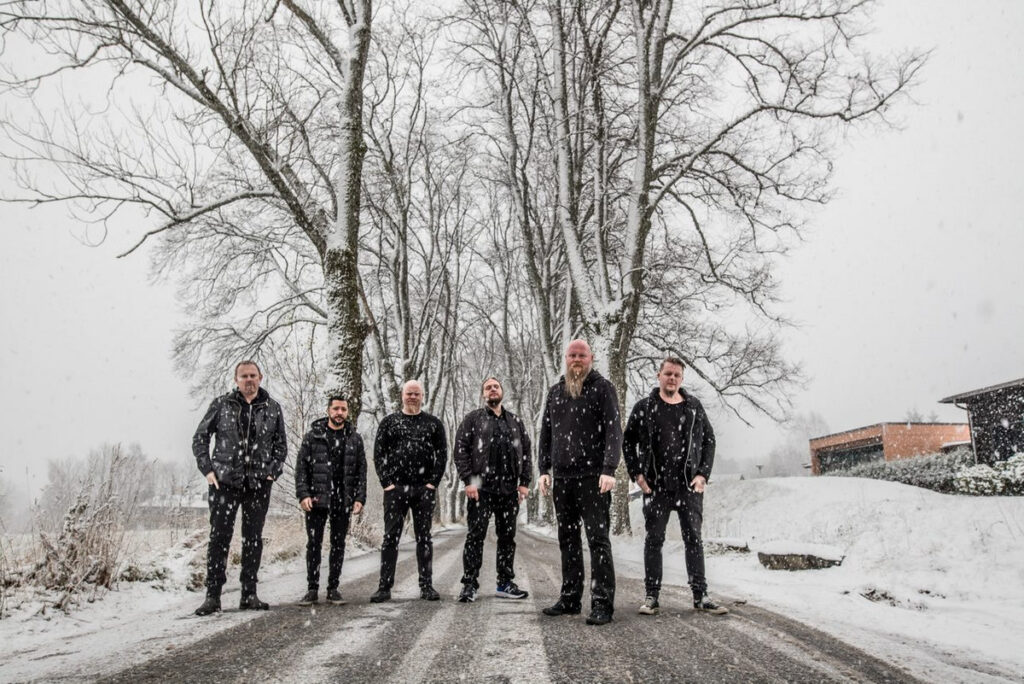
It’s really interesting how you, as a band, have evolved over the years; and the first thing I’d like to ask is about the eclecticism that lies at the heart of the band. I know you’ve said in previous interviews how you didn’t want to be bound by genre. I think that’s ideal from an artistic sense, but it can then make it quite challenging to promote yourself into the world, can’t it?
Yeah, it is. And it’s something that we’ve been thinking quite a lot about since coming back together because we split up for ten years and it’s always easier to analyse things after a little time. So, in the first period, we followed our instincts all the time – like: “oh let’s do an acoustic album!” So, we did an acoustic album. Or, “let’s do an hour-long song!” So, we did an hour-long song and everything in between, basically. But I think this time around, we had a slightly more analytical approach to it. We looked back at our previous career and we found something on each and every album, we found something typically Green Carnation in all the darkness we were operating in. So, I think what we wanted to do was to collect those typical Green Carnation elements into a new sound, because I think that people who know the band, would be able to recognise elements from our previous life as well, which was something we aimed to do, but of course we needed to let those elements develop over fifteen years and we needed to work with them with fifteen years more experience as musicians and as human beings, and I think that’s why it does sound fresh. It sounds like the past and the future at the same time, and that’s something we aimed for.
I really like that idea – as a musician and an artist, being able to tie into your past and use that as a springboard. It’s something that can be a challenge, but it’s such an interesting way of working because you have to create those call backs and find a way forward, lest you stagnate…
And to answer your question more directly, I think maybe (when you look back at our first period) … maybe that constant change of direction, also, was a bad thing for us. Artistically, it was good – the band didn’t move in one direction (it’s easy to see now), we moved in all the directions at the same time! It’s interesting. I’m glad we did what we did in the first period and I’m glad we have a slightly different approach right now.
I think another thing that can be difficult in terms of outside perception, is when you’re tied primarily to the metal genre but have clean vocals, I think there can be a perception that clean vocals don’t carry the same emotional weight as harder vocals – and it’s not a view I subscribe to, but I think it’s a difficult concept that something can be thematically and musically heavy, but still have that harmony and melody.
I think it’s a natural thing for us, the approach to what we do. First of all, I cannot sing in any other way than what I’m doing, so that’s a factor as well. I would love to be able to do some growling, but it’s not in my repertoire. But yeah, I think we operate within a progressive / rock / doom sort of place and I think if you ask people for their words to describe Green Carnation, I think they would include “melancholy”, for example, and the beauty of melancholy and the sadness of melancholy. And my only way to work with those emotions is by using my voice as I do… although I would have liked to have done a little bit of growling now and then as well.
It’s something that has often drawn me to doom, and when I discovered Green Carnation, it was in a discussion with a friend about My Dying Bride – and it was about the way that doom evokes images and landscapes in a way that not many other genres do, particularly when you combine progressive with that… so, when you’re creating, do you have an underlying visual element that helps underpin the atmosphere you are trying to evoke?
Not so much physical, I think. But more in the form of the emotions that we work with. We talk quite a lot about what the song is about – the lyrics and stuff. Obviously as a singer, although I don’t always write the lyrics myself, I need to go into the lyrics and make them my own and associate them with my own life. So, there are mental associations and not that much physical. And I agree that, with My Dying Bride, they do that so well. I mean, I know they’re from there; but if I were to play them, not knowing where they’re from, I would guess Yorkshire! Because, they have the Yorkshire moors in their sound, almost. And there are some bands that do that, and it’s very fascinating.
It’s interesting that you have an approach where you have other members of the band writing lyrics as well, because lyric writing can be a very personal thing and it can be difficult, I think, to let go of what you’ve written and allow someone else to sing it – there must be a lot of trust within the band?
Yeah, there is a lot of trust and, you know, Last Day of Darkness is probably the best example of that, because that’s written all by Tchort, our guitarist, and it’s about losing his first-born daughter. And, then, having a new child, a boy, and it’s about the contrast of feelings – having that constant consciousness of loving this new child. So, there are huge emotions, and that was my first album with Green Carnation and to go into the studio with a one-hour song… it was so stupidly ambitious in so many ways!
So, I learned to work like that, and we do have a trust within the band and the new songs are also about, you know, really personal stuff for the guy who wrote the lyrics. But I know him so well and I know the people that he writes about, but even though it’s personal lyrics, I think they’re also questions that many people can relate to, because they’re big questions of course. It’s about… well, on this album, it’s about loneliness and the fear of becoming lonely, which comes from a very personal place. And the other theme, which is kinda strange now that we have this COVID-19, is about the fear of having something from the outside coming in to control your life. It can be like politics, it can be disease, or a virus, maybe… so, yeah, I need to work a lot with the lyrics in order to make them my own, but I’ve been working like that for many years, so it’s a challenge still, but it’s a challenge I like.
I’ve never found myself in the position of having to write lyrics in another language, but I’ve always found them to be like writing poetry – is it a challenge to get those nuances that come with language, is it something that requires refinement over time?
Yeah. The way I work with it. I think I listen to the demos and stuff and the small details and everything, after listening to a song four or five hundred times, you get an idea of what you really want to change. And also, when going to the studio, you should go in with an open mind because there might be some ideas coming up there which are better than the ones you have from listening to the song five hundred times. It’s also, there’s a lot of detail that… I don’t like to go to the studio when I’m not mentally prepared for it and that comes both with the technical tones that I have to sing and also with the mood of the song. If I’m not 100% comfortable with what we want to say with it, we cannot really go to the studio to express something that you don’t really understand, so I use a lot of time on that.
It’s something that’s not so much spoken about, I think, but being a singer in any band can be very vulnerable, especially when you’re in the studio, and I know a lot of singers who end up with psychosomatic colds and, form my experience, I very often get this phantom sore throat, almost inevitably, before any performance and I was wondering if you have any warm ups or processes that help you to prepare for this sort of thing?
I had vocal tuition many years ago and I actually think I learned something then, that I just use now without thinking about it. When playing live, I normally don’t really warm up, but then again, it’s in the evening and I’ve normally used my voice a lot during the day. In this session, I recorded in the mornings, which was completely different because the voice changes all day long. So, then, I needed to get up a couple of hours before going to the studio because I needed to warm up myself, so I was talking to myself and I was singing a little bit and the neighbours must have thought I was crazy or something! It can be a very challenging thing in the studio, but luckily I’ve sung on fifteen or twenty or even twenty-five albums, and I’m kind of a relaxed person because I would trust the producer, because you all want the same – you just want it to be as good as possible. But it can be mentally draining at times. I think it’s important, too, to have low shoulders and be open to new ideas. You know, even though I may have done a chorus that I really thought was good – you have to be open and trust the people you’re there with. So, you have to be open, and that’s the way to get it as good as possible.
So, yeah, if you’re confident in what you do, you’re going to be OK. But, if you’re not sure, then you can warm up for four or five hours and you’re not going to deliver anyway. So, I guess, through the years, I’ve just become a little bit more confident and I believe in what I’m doing, so it’s alright.
When, I saw that you’d finished the record, I thought “OK, you’ve finished with a cover…” and, in many cases, a cover on a record feels more like a bonus track type of thing; and I must confess, I approached it like that… so, I was totally blown away by the way that it was arranged and the use of the keyboards, particularly, to bring a whole new life to it. I think, with covers, when you want to make it personal and yours, that’s a very different thing to simply playing a song that you like in a familiar style – so how did you guys come to the conclusion that this would be the track to finish the album and how did you approach it?
There’ve been a lot of questions about that in the interviews and that’s something that’s… we did have like three or four new songs that we needed to move for us to have Solitude on the album. Because the album is something that starts when you start it and it ends when the last tone has gone away. Sometimes in albums, you have fillers, for example, and you feel that, although there are twelve songs on the record, if it would have been nine, it would have been much better.
So, when we were discussing what we wanted with the album – what kind of atmospheres we wanted to work with, it became obvious for us that this was the song that we needed, because we could do our version of it. We did this acoustic album, and it could also have fitted on the acoustic album, genre-wise or technically. But regarding what Solitude is about and what kind of atmosphere – it’s just made for the album.
That might sound a bit stupid, but I think if we had put in one of our own songs, instead of that one, no matter how good the song is that doesn’t really count. We needed Solitude to finish off this album, so we put it on there. It’s been in the band for two and a half years, because we were working on this live in studio, YouTube thing, so we made a version of it two and a half years ago and when we saw how the album was going to be, we just knew we had to include the track and that it would be the perfect end to the album. So, yeah, it’s not a bonus track at all, it’s as important, I think, as all the other songs, and I’m glad we ended up putting it at the end, because we had a few ideas as to where the different songs should go, but I do think we ended up with the only sensible way of putting them together because I think, as a whole, when you listen to the album from start to finish, it’s almost like one song.
You touched upon one of my other questions anyway, because I’m a huge fan of The Album as a concept, and particularly in prog and doom, if you have an album that’s a journey from start to finish, then you fall into it, and that was very much my experience of listening to the record – I went to review it, and ended up lying on the sofa, just mesmerised and I sat up at the end and thought “damn, I should’ve been writing about that!” So, I had to listen again… That’s what I want from a record – that journey is really important, but it’s also extremely hard to sequence the record correctly.
It was an especially important aspect for us on this album, that journey that you spoke about. And, since coming back together in 2016, we did Last Day Of Darkness, a full live production and we used one and a half years to bring that to the stage, because it’s a hugely demanding thing to play live with three guitarists and so on. And, when playing that live, many times you could see maybe five or ten or fifteen people crying in the middle of the song. And, obviously, it’s a very emotional song, but that’s not the only thing because you can do emotional stuff on stage and not connect to the audience.
We had to think “why does this connect to the audience so much more than our older songs that are just as emotional, in many ways?” But, of course, you have this one-hour piece of music and you invite people into your despair in the first ten seconds and you keep them there and you hold them there for an hour and that’s mentally draining for people. It’s a very… you let them go after the gig and they don’t really know what hit them, so we’d been working to also create that journey in our live sets and it never stops before it’s finished, of course.
And that’s also something that we wanted to bring to the album and I really enjoy listening to the album from beginning to end. I’ve never been a fan of just going in and listening to something and then doing something else, I think the songs belong together and that’s why we decided to cover one of our own songs in the middle, from twenty years ago – it was needed on the album. So, it’s about letting the album decide how it’s going to be – not saying that we have twelve new songs and they all have to be on the album. The album has to decide how it will be and that was particularly important to us this time around.
It’s great that you’re able to do that, because I think musicians can jealously guard the songs that they create and, of course, that’s a hard discussion, when you’re saying that “yeah, we have these eight songs, but only six work here” – it’s quite daunting to say that!
It was, but one of the things that we actually did discuss before deciding how the album was going to be, we thought maybe because we’re getting older that we talk more, but I think those things are so important.
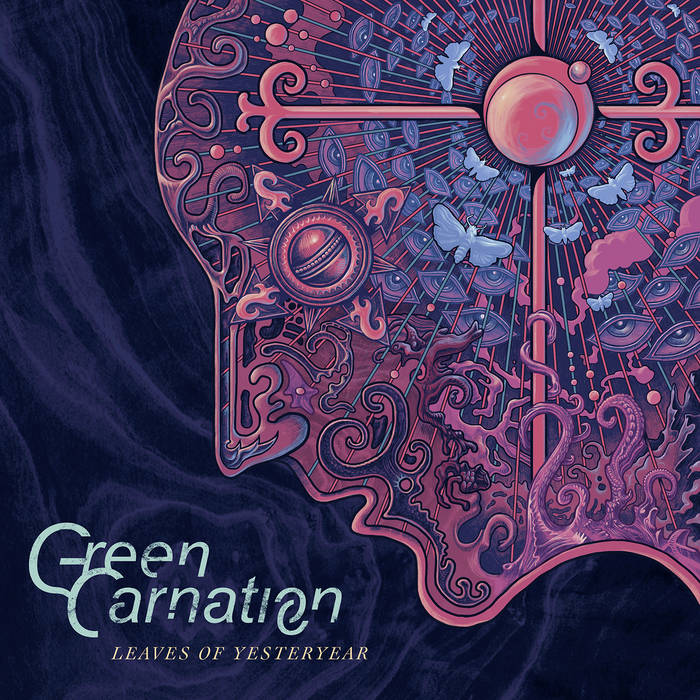
The final piece of the puzzle, I guess, and especially important in this prog / doom arena, is the artwork and presenting your music with all the aspects- who was the driving force behind the art on this record?
We’ve worked with not too many, but some great artists over the years. One guy we constantly go back to, and it’s the guy who made this cover, is Niklas Sundin – he’s also known for being the guitarist of Dark Tranquillity for many years. When we got back together in 2016 and made this concert film, we also did this art project for the sleeve and stuff and he was included there.
The first album cover he made for us was in 2001, and we’re the same age, have the same kind of references, I think. We love his artwork and he likes the band, and I thought that we needed somebody who understood what we wanted to do with this album to make the cover. I talked to Niklas and he was really interested and got all the demos and all the lyrics. He listened through everything, kind of like I do with the lyrics, but him getting into the music, because we wanted a piece of him on the album as well. We gave him full artistic freedom because we knew he would understand what we wanted, and he did, and I think it’s turned out really nicely.

